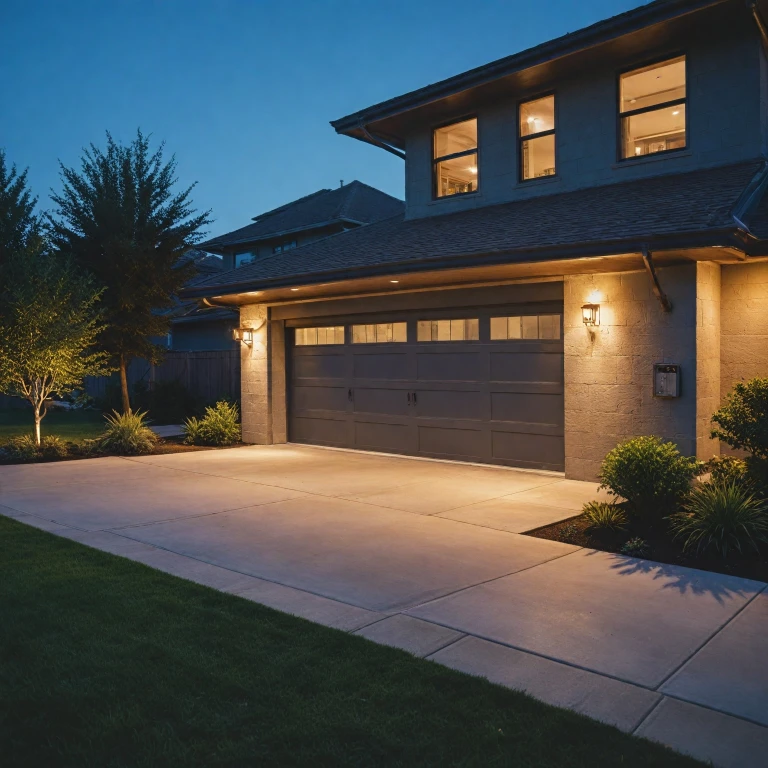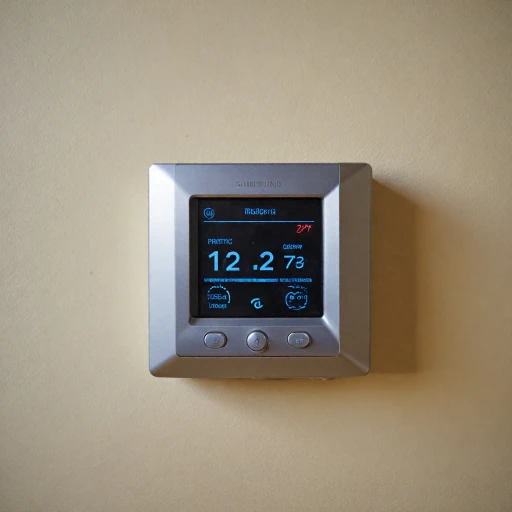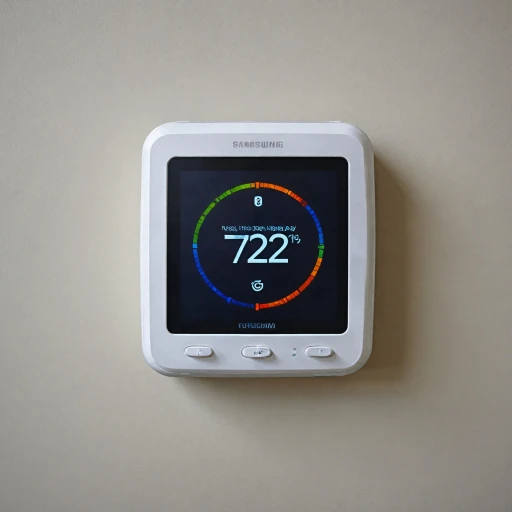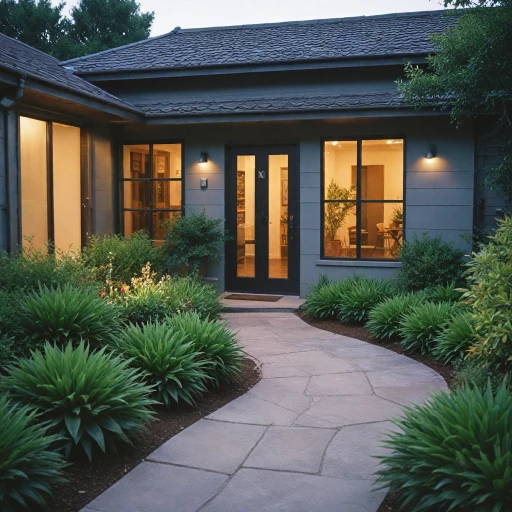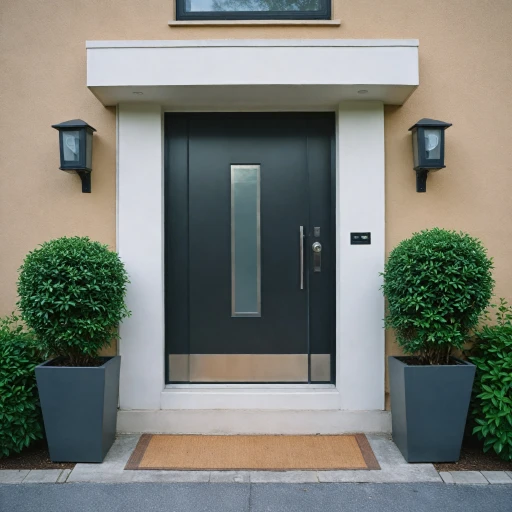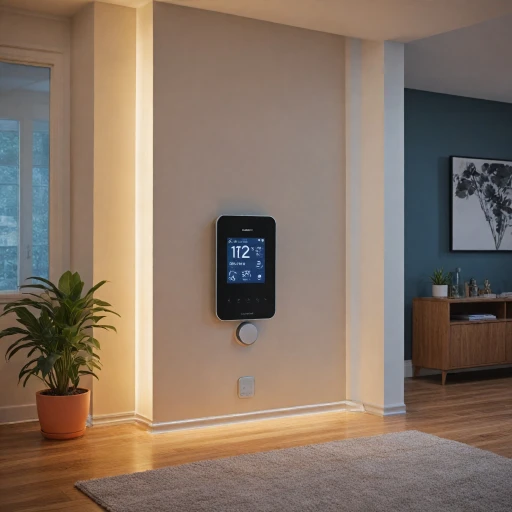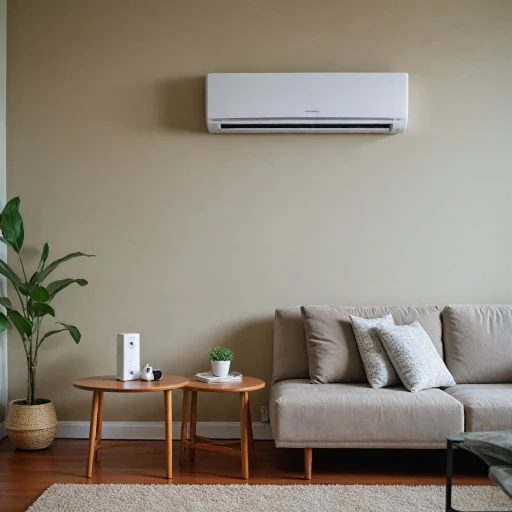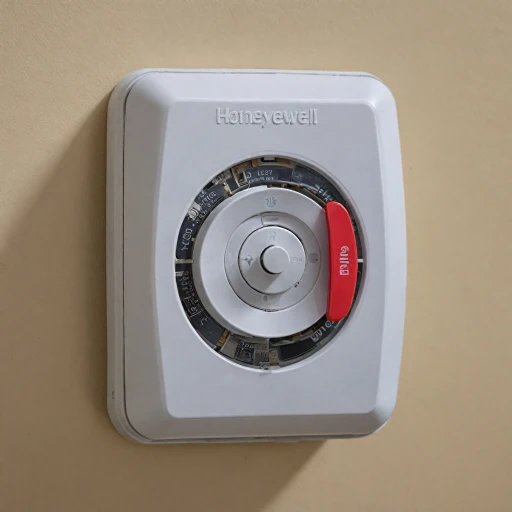
Understanding Smart Thermostats
Exploring the Dynamics of Smart Thermostats
The advent of smart technology is reshaping the way we manage our homes, with smart thermostats being at the forefront. These innovative devices are not just about temperature control; they offer a seamless blend of functionality, convenience, and efficiency. But how does a smart thermostat add value to your home? At its core, a smart thermostat is designed to learn from your habits, enabling it to adjust settings automatically to achieve optimal energy efficiency. This not only ensures comfort but also translates into significant cost savings over time. They often integrate with other smart devices, creating a cohesive environment—ideal for those with a smart garage and Z-Wave systems. Moreover, the integration possibilities are endless. You can connect smart thermostats with various smart home controllers, such as Z-Wave hubs, to enhance automation. This integration allows for smoother operation of your home systems like a smart garage, where door openers and tilt sensors play pivotal roles. For those valuing convenience, smart thermostats offer remote control capabilities. Imagine being able to manage your home's climate from anywhere using a smartphone or any remote device. It's not merely about comfort—this level of control increases security by ensuring your home remains at its ideal state when you're away. The trend towards automation with Z-Wave technology is also closely tied to increased security and privacy in smart homes. With these technologies, you can ensure secure connections not only for your thermostat but for other devices like smart security systems and garage openers. Understanding these smart products thoroughly before making a purchase can provide better insights into their features and capabilities. To delve deeper into how smart devices like motion sensors play a role in home automation, consider exploring more insights here. Smart thermostats offer a forward-thinking approach to home automation, promoting energy efficiency and offering tailor-made solutions suitable for any modern household. As the demand for smart technology grows, staying informed about these products will ensure a smooth transition into a more comfortable, secure, and efficient way of life.The Role of Z-Wave Technology in Home Automation
The Power of Z-Wave in Home Automation
Z-Wave technology has become a cornerstone in the realm of home automation, offering a robust and reliable wireless communication protocol. This technology is particularly beneficial for integrating various smart devices, including smart thermostats and garage door systems, into a cohesive network.
Seamless Integration with Smart Devices
One of the standout features of Z-Wave is its ability to connect multiple devices, such as a smart garage door opener and a smart thermostat, through a central hub. This integration allows for synchronized operations, where your garage door can communicate with your thermostat to adjust the home climate as soon as the door opens or closes. This level of automation not only enhances convenience but also contributes to energy efficiency.
Enhanced Control and Compatibility
Z-Wave's compatibility with a wide range of products, including garage door controllers and tilt sensors, ensures that users can easily expand their smart home ecosystem. The technology supports remote control capabilities, allowing homeowners to manage their garage door and thermostat settings from anywhere using a smartphone app. This remote access is crucial for maintaining security and comfort, especially when you are away from home.
Security and Reliability
Security is a top priority in smart home systems, and Z-Wave excels in this area by providing encrypted communication between devices. This ensures that your smart garage door and thermostat are protected from unauthorized access. Additionally, Z-Wave's mesh network design enhances reliability by allowing devices to communicate through multiple pathways, reducing the risk of signal interference.
For more insights on enhancing your home security with Z-Wave technology, consider exploring enhancing home security with Z-Wave door locks.
Integrating Z-Wave Garage Door Systems with Smart Thermostats
Seamless Integration: Smart Thermostats Meet Z-Wave Garage Door Systems
Integrating smart thermostats with Z-Wave garage door systems is rapidly becoming a cornerstone of home automation. This synergy not only enhances convenience but also reinforces the security and efficiency of your home.
Advanced Z-Wave technology enables seamless communication between your smart thermostat and garage door systems. When your garage opens, a sensor communicates with your smart thermostat to adjust the indoor climate accordingly, optimizing energy use. It ensures your home is ready for your arrival, maintaining comfort all year round.
The integration process is streamlined through a Z-Wave controller that acts as a central hub, ensuring that your smart thermostat and garage systems work in harmony. This allows a central remote control of various smart devices, providing convenience and enhancing your day-to-day experiences. Additionally, the incorporation of smart security systems ensures the protection of sensitive data, emphasizing the importance of selecting compatible devices that enhance overall safety.
Many consumers are drawn to how Z-Wave technology can complement their lifestyle, offering a variety of devices that are easily compatible with existing setups. This compatibility extends beyond mere convenience, playing a crucial role in energy efficiency and supporting financial savings over time.
Ultimately, the integration of smart garage door systems with thermostats is a testament to the evolving nature of smart homes, offering a cohesive experience that connects everyday devices into an intelligent network.
Security and Privacy Considerations
Safeguarding your Home with Smart Thermostat Integrations
Incorporating smart thermostats into your home automation system opens new avenues for enhancing security. By pairing with Z-Wave technology, these devices communicate seamlessly with other smart security systems, such as garage door openers and tilt sensors. When integrated, a smart thermostat can interact with a Z-Wave garage door system. This integration ensures your garage door's status is monitored and managed remotely, adding an extra layer of control. For instance, smart thermostats equipped with wireless capabilities can communicate with a garage door opener using a Z-Wave controller, allowing you to close your garage when you leave the house or verify it remains secure at night. Beyond convenience, this interconnectivity reduces the risk of unauthorized entry. A garage equipped with a smart opener, tilt sensor, and compatible thermostat is not just a convenience; it is a safeguard. The technology provides users with real-time notifications about the status of their door, such as alerts if the garage unexpectedly opens or closes. Security systems now integrate multiple devices ensuring that each component enhances the collective security framework. A smart garage setup that includes a door tilt sensor connected to a thermostat and remote control offers increased protection at a reasonable price point. Investing in these technologies does not only contribute to the security of your garage but also your entire household. Implementing these systems requires aware choices regarding which products you select, considering the compatibility with existing devices like hubs, controllers, and remote openers. With the added assurance of smart security, homeowners can rest assured, knowing that their homes are securely monitored at all times.Energy Efficiency and Cost Savings
Boosting Efficiency and Savings with Smart Thermostats
Smart thermostats have become an integral part of modern home automation systems, much like their counterparts, the Z-Wave garage door systems. These intelligent devices not only enhance convenience but also offer notable energy efficiency and cost savings advantages. A smart thermostat optimizes the heating and cooling patterns in your home, adapting to your lifestyle and preferences. By using advanced sensors and controllers, such devices maintain the ideal home environment while reducing energy wastage. Recent studies have shown that a smart thermostat can help homeowners cut down on their utility bills significantly each month. This reduction in energy consumption is achievable by automatically adjusting the temperature when it senses no one is around or at specific times during the day when energy prices peak. Moreover, the integration of smart security systems with garage door openers and smart thermostats creates a synchronized network that elevates overall operational efficiency. For instance, when a smart garage door opens and a family member arrives home, the thermostat can automatically adjust the internal temperature based on pre-set preferences, ensuring a comfortable environment upon entry. Wireless technology, particularly Z-Wave, further enhances the capabilities of these systems by providing seamless interactions. One such innovation is the tilt sensor in garage systems which not only helps in ensuring the security of the home but also aids in effective climate management by communicating with the thermostat to manage temperatures efficiently. It's important to note that selecting a compatible hub and devices is crucial for effective automation. Products that support Z-Wave technology are typically designed to communicate and work well together, further increasing the reliability and effectiveness of your home's automation network. Investing in compatible devices may have a higher initial price, but the long-term savings in energy costs can justify the expense. In conclusion, integrating smart thermostats with devices like Z-Wave garage door systems isn't just about convenience—it's a strategic choice for reducing energy consumption and cutting costs, making your home not just smarter but also more economical.Future Trends in Smart Home Technology
Embracing Technological Advancements in Your Home
The landscape of smart home technology, including systems like Z-Wave garage door openers and smart thermostats, is evolving rapidly. We are seeing significant innovations aimed at not only improving convenience but also enhancing security and energy efficiency. The integration of wireless technologies offers impressive advancements. For instance, integrating wave garage door systems with smart thermostats can create a synchronized home automation experience. This allows for seamless control of your home's climate and security from a single device or a connected hub. Emerging Trends:- AI-Powered Features: Artificial Intelligence is taking the lead in improving smart product functionality. Expect AI features to enhance user experience by learning habits and making personalized adjustments.
- Interoperability: More products are becoming compatible with a range of systems. This trend makes it easier to integrate door controllers, thermostat controllers, and other devices into a unified network.
- Wireless Innovations: The development of more sophisticated wireless sensors and remote controllers means greater flexibility for installation and use, with fewer wires and more sleek interfaces.
- Focus on Security: Smart security remains a top priority. Advancements in sensor technology, often embedded into products like door tilt sensors and security systems, aim to better protect against unauthorized access.
- Cost-Effective Solutions: As technology advances, prices continue to vary; however, the market is seeing a rise in affordable smart garage door and thermostat products, making them accessible to more homeowners.
